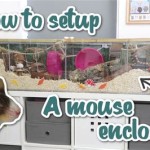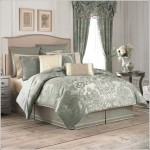How To Layer Crib Bedding
Layering crib bedding correctly ensures both a safe and comfortable sleep environment for infants. Proper layering also contributes to temperature regulation and prevents overheating, a significant risk factor for Sudden Infant Death Syndrome (SIDS). This guide provides a step-by-step approach to creating a safe and cozy crib for a baby.
Start with a Firm Mattress
A firm, flat crib mattress is the foundation of safe crib bedding. It should fit snugly within the crib frame, leaving no gaps larger than two fingers between the mattress and the sides. A tight fit prevents the infant from becoming trapped. The mattress should also be specifically designed for cribs and meet current safety standards.
Add the Fitted Sheet
A fitted crib sheet made of breathable material, such as cotton, is the first layer on the mattress. Ensure the sheet fits snugly and covers the entire mattress. Tuck the elastic edges securely under the mattress on all sides to prevent the sheet from coming loose while the infant sleeps.
Waterproof Mattress Pad (Optional)
A waterproof mattress pad offers protection against spills and diaper leaks, preserving the lifespan of the mattress. If used, the pad should be placed directly over the fitted sheet, ensuring it is also tightly fitted and tucked in to prevent bunching or wrinkling. Choose a breathable waterproof pad to avoid overheating.
Avoid Loose Blankets and Comforters
Loose blankets, quilts, comforters, and pillows should not be used in a crib for infants under 12 months of age. These items pose a suffocation risk and contribute to overheating. The American Academy of Pediatrics recommends keeping the crib free of any loose objects.
Introduce a Wearable Blanket or Sleep Sack
A wearable blanket or sleep sack provides warmth without the dangers of loose bedding. Select a sleep sack appropriate for the baby’s size and the room temperature. Ensure the neck opening is snug but not constricting, and that the armholes are appropriately sized. Follow the manufacturer’s guidelines for safe usage.
Consider a Swaddle (For Newborns Only)
Swaddling can be soothing for newborns and can help them sleep longer by mimicking the feeling of being held. However, it’s crucial to stop swaddling once the baby shows signs of rolling over, typically around two to four months of age, to prevent suffocation. Use a thin, breathable swaddle blanket and ensure it is not too tight. The baby's hips should be able to move freely. If using a Velcro swaddle, ensure it is securely fastened but not too tight.
Layering for Different Temperatures
Adjust the layers based on the room temperature. In warmer weather, a single layer like a short-sleeved bodysuit and a lightweight sleep sack may suffice. In cooler temperatures, a long-sleeved bodysuit layered under the sleep sack might be necessary. Monitor the baby’s temperature and adjust the layers as needed. Overheating is as dangerous as being too cold.
Regularly Check and Maintain Bedding
Inspect the crib bedding regularly for any tears, loose threads, or damage. Replace any worn or damaged items immediately. Wash all bedding according to the manufacturer’s instructions. Ensure the mattress remains firm and maintains its shape.
Key Safety Reminders
Prioritize safety when layering crib bedding. Keep these key points in mind:
- No loose blankets, comforters, pillows, or bumper pads.
- Ensure a snug fit for all bedding items.
- Use breathable materials.
- Monitor the baby’s temperature for overheating.
- Discontinue swaddling once the baby shows signs of rolling.
Creating a Safe Sleep Environment
Creating a safe sleep environment is paramount for infant well-being. Adhering to safe sleep guidelines significantly reduces the risk of SIDS and other sleep-related hazards. Proper layering of crib bedding plays a crucial role in this, ensuring a comfortable and protected sleep for the baby.
Choosing the Right Materials
Opting for natural, breathable materials like cotton for crib sheets and sleep sacks promotes airflow and temperature regulation. Avoid synthetic fabrics that can trap heat. Organic materials are also a good choice as they are free from harmful chemicals and pesticides. Always check the manufacturer’s labels for care instructions and safety recommendations.
Monitoring Baby's Comfort
Regularly check on the baby to ensure they are comfortable and not overheating or too cold. Feel the baby’s back or chest to gauge their temperature. If the baby feels too warm, remove a layer. If the baby feels cold, add a layer. A comfortable temperature promotes restful sleep.
Adapting to Baby's Development
As the baby grows and develops, adjust the bedding accordingly. Transition from swaddling to a sleep sack once the baby can roll over. Consider using a toddler-sized sleep sack once the baby outgrows the infant size. Always prioritize safety and adjust the bedding practices to meet the baby's changing needs.

Layering Crib Sheets A Laundry Tip For New Moms

Baby Crib Sheet Layering Trick Salty Canary

Layering Crib Sheets A Laundry Tip For New Moms

Baby S

Nursery Design Tips For Choosing Crib Bedding The Company

Setting Up Crib Bedding Sets For Baby S Comfort And Safety

Crib Bedding Essentials Guide Sealy Baby

How To Make A Crib Mattress More Comfortable Guide

How To Keep A Crib Mattress Warm Without Risks Expert Tips

The Little Green Sheep Baby Bedding Guide








